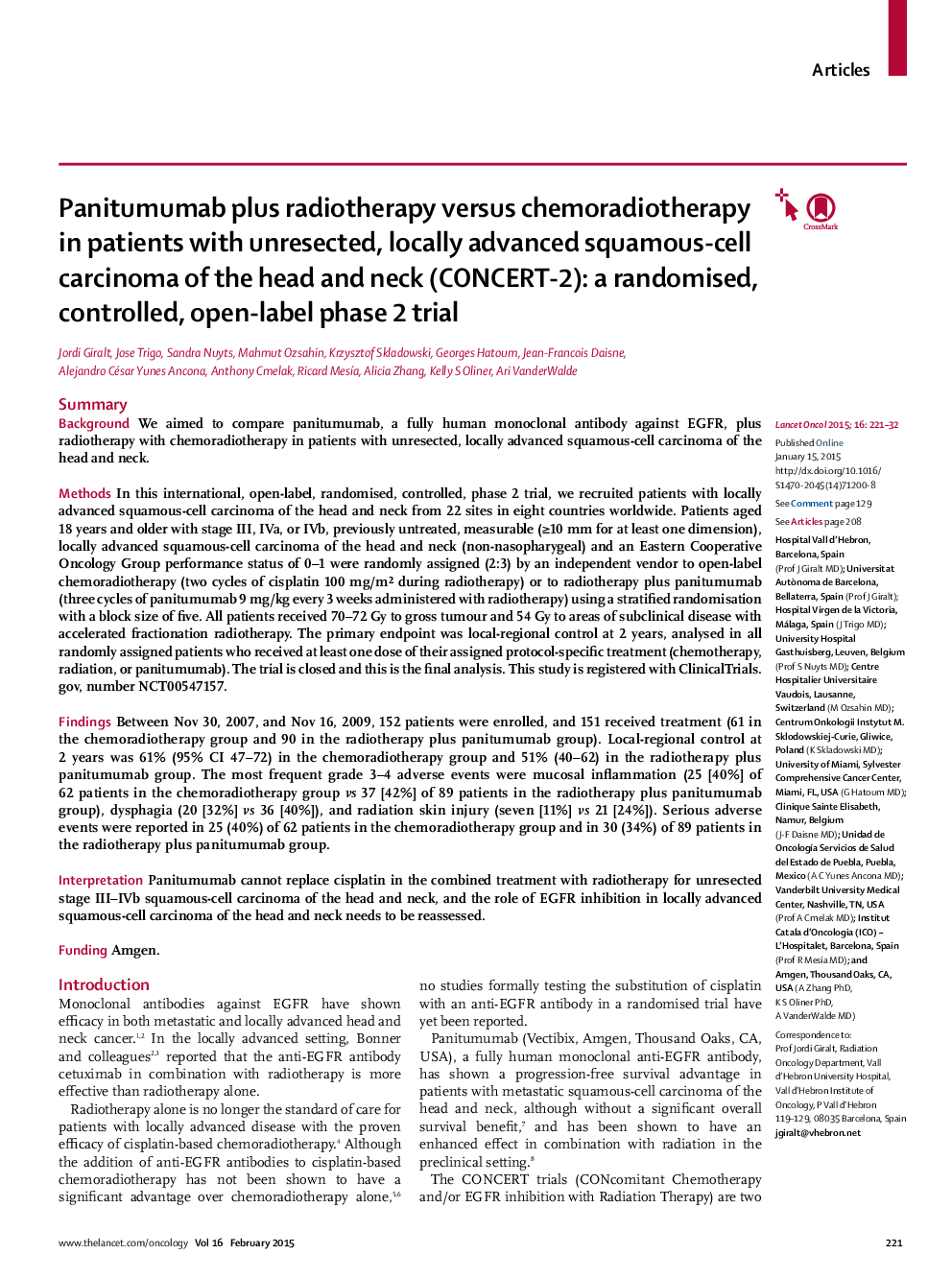| Article ID | Journal | Published Year | Pages | File Type |
|---|---|---|---|---|
| 3993524 | The Lancet Oncology | 2015 | 12 Pages |
SummaryBackgroundWe aimed to compare panitumumab, a fully human monoclonal antibody against EGFR, plus radiotherapy with chemoradiotherapy in patients with unresected, locally advanced squamous-cell carcinoma of the head and neck.MethodsIn this international, open-label, randomised, controlled, phase 2 trial, we recruited patients with locally advanced squamous-cell carcinoma of the head and neck from 22 sites in eight countries worldwide. Patients aged 18 years and older with stage III, IVa, or IVb, previously untreated, measurable (≥10 mm for at least one dimension), locally advanced squamous-cell carcinoma of the head and neck (non-nasopharygeal) and an Eastern Cooperative Oncology Group performance status of 0–1 were randomly assigned (2:3) by an independent vendor to open-label chemoradiotherapy (two cycles of cisplatin 100 mg/m2 during radiotherapy) or to radiotherapy plus panitumumab (three cycles of panitumumab 9 mg/kg every 3 weeks administered with radiotherapy) using a stratified randomisation with a block size of five. All patients received 70–72 Gy to gross tumour and 54 Gy to areas of subclinical disease with accelerated fractionation radiotherapy. The primary endpoint was local-regional control at 2 years, analysed in all randomly assigned patients who received at least one dose of their assigned protocol-specific treatment (chemotherapy, radiation, or panitumumab). The trial is closed and this is the final analysis. This study is registered with ClinicalTrials.gov, number NCT00547157.FindingsBetween Nov 30, 2007, and Nov 16, 2009, 152 patients were enrolled, and 151 received treatment (61 in the chemoradiotherapy group and 90 in the radiotherapy plus panitumumab group). Local-regional control at 2 years was 61% (95% CI 47–72) in the chemoradiotherapy group and 51% (40–62) in the radiotherapy plus panitumumab group. The most frequent grade 3–4 adverse events were mucosal inflammation (25 [40%] of 62 patients in the chemoradiotherapy group vs 37 [42%] of 89 patients in the radiotherapy plus panitumumab group), dysphagia (20 [32%] vs 36 [40%]), and radiation skin injury (seven [11%] vs 21 [24%]). Serious adverse events were reported in 25 (40%) of 62 patients in the chemoradiotherapy group and in 30 (34%) of 89 patients in the radiotherapy plus panitumumab group.InterpretationPanitumumab cannot replace cisplatin in the combined treatment with radiotherapy for unresected stage III–IVb squamous-cell carcinoma of the head and neck, and the role of EGFR inhibition in locally advanced squamous-cell carcinoma of the head and neck needs to be reassessed.FundingAmgen.
